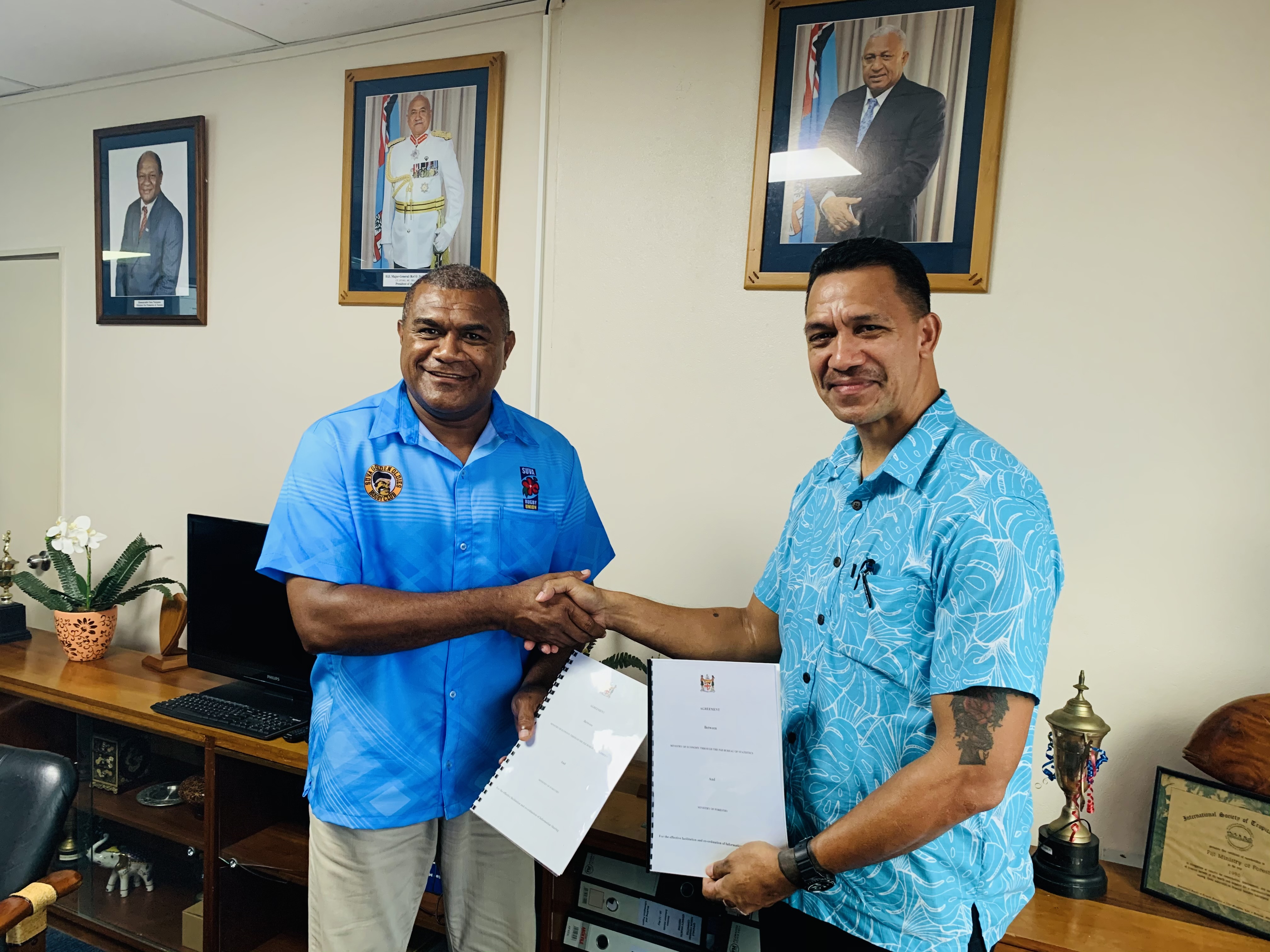
Forestry and FBoS Work Towards Accurately Capturing Information on the Forestry Sector
The Ministry of Forestry and the
Fiji Bureau of Statistics (FBoS) now have a formal arrangement to help capture
the accurate information within Fiji’s forestry sector. This follows the recent
signing of a Memorandum of Agreement.
Chief Executive for the Fiji Bureau of Statistics, Kemueli Naiqama, said the agreement will facilitate improved access by FBoS to data that the Ministry of Forestry collects in the course of its duties.
He said that with the access to information in a more systematic and structured approach, FBoS should be able to assist in determining the entire forestry sector’s contribution to Fiji’s economy as measured through the conventional methodology of Gross Domestic Product (GDP).
Currently, the GDP measurement is limited to log production from pine, mahogany and native trees.
“While data on pine and native tree species are readily available, data on mahogany is an area that this partnership will focus on for the purpose of accurately capturing total log production,” he said.
Moving forward, the areas that FBoS can consider include the value of standing forests, carbon trading and non-wood forest products (NWFP) like bamboo, candlenut and mulberry trees, to name a few. Of importance also is the need to measure the value of ecosystem services which forests naturally provide. These are currently not valued at all.
“Another area that the Bureau could develop through this partnership is the Forestry Satellite Accounts,” added Mr. Naiqama.
These accounts will be instrumental in capturing economic data that is comparable with other economic statistics. This will be done by contrasting data from the demand side with data from the supply side of the economy, and will also take into account other forestry contributions captured in other sectors. A similar model was successfully implemented for the tourism sector.
The current measurement of log production only is done before any value adding process. When the logs are processed, the value of the processed products such as sawn timber is accounted for under the manufacturing industry. Essentially, this means that forestry’s contribution to economic growth as measured by GDP is low. It is so far the lowest not only among the resource-based industries such as agriculture, fisheries and mining, but also among all other industries.
In 2019, the forestry industry’s contribution to the economy was recorded at $24.7 million, equating to about 0.2 percent of GDP (refer graph). Agriculture recorded the highest in the resource-based industries with a contribution of 6.8 percent for the same period. This was followed by fisheries and mining with contributions of 0.6 and 0.5 percent, respectively. Manufacturing contributed 10.4 percent.
Permanent Secretary for Forestry
Pene Baleinabuli said the new arrangement with the Fiji Bureau of Statistics
can help capture information on the entire forestry sector.
“FBoS could help re-define the way in which the forestry sector is measured in the same approach that it has done for tourism,” he said.
“The sharing of data, however, is not just about measuring forestry’s contribution to GDP, but importantly about accurately capturing the developments throughout Fiji’s forests for the purposes of holistic sustainable management,” he said.
“The Ministry notes that Fiji’s rate of deforestation is approximately 4,000 hectares per annum, but this doesn’t correspond with the accounting of forestry industry as per the GDP both in log or processed form,” he said.
“The new agreement with FBoS is a significant step in terms of capturing a holistic picture,” he said.
Mr. Baleinabuli also said that the Ministry of Forestry, in the past few months, has made similar arrangements for data sharing with other central agencies like the Fiji Revenue and Customs Services, the Ministry of Employment, Productivity and Industrial Relations, the Fiji National Provident Fund, and the Biosecurity Authority of Fiji.
“We need to collaborate with agencies that could help capture the accurate information on Fiji’s forests to ensure that there is a synchronized approach to managing our forests.
“Ultimately, we need to ensure the sustainable management of our forests to be able to address the increasing threat of climate change, to help protect the environment and enhance biodiversity.”
“We also need to facilitate economic growth but in doing so, we need to ensure that we are re-planting more than we are harvesting. This is currently being addressed through Fiji’s tree-planting revolution targeting 30 million trees in 15 years. The target in January 2019 was four million trees in four years. However, Fijians and visitors fully supported the initiative and planted one million trees in 10 months. Additionally, the Ministry of Forestry in partnership with the iTaukei Lands Trust Board and other agencies identified several highly degraded areas where over 30 million trees could be re-planted. This led to the Honourable Prime Minister’s announcement of Fiji’s new planting target of 30 million trees in 15 years.”
“We are on target to achieve this,” Mr. Baleinabuli said.
Fiji has planted 2.9 million trees and mangroves in the past 23 months. One million under the initial target and 1.9 million under the new target.
“We continue to thank all Fijians who understand and appreciate the importance of nature and the environment and have subsequently planted trees and mangroves,” he said.
Mr. Baleinabuli said that Fiji also needs to ensure the equitable distribution of wealth from the forestry sector.
“If we choose to harvest a certain portion of our forests, we need to ensure a triple win outcome - a win for the economy, a win for the environment and a win for the stakeholders involved in the forestry sector.”
“This is what Government is driving towards. It is a responsibility the Ministry of Forestry takes seriously, hence the new arrangements with FBoS and other stakeholders,” he said.